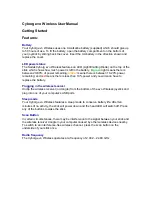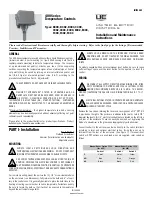
•
Economy mode
: If the room will not be used for a longer period of time (for example
during the night) the temperature setpoint can be relaxed even further in order to achieve
higher energy savings.
•
Building protection mode
: In this mode, the room thermostat is out of service. The room
will only be heated (or cooled) if the room temperature has reached values so low (or
high) that there is a risk of the installation being damaged from freezing or overheating.
Each of the four operating modes has its own temperature setpoint, as shown in the following
diagram:
Comfort
mode
Protection
mode
Economy
mode
Standby
mode
Overheating
protection setpoint
Frost protection
setpoint
Standby setp. (cooling)
Economy setp. (cooling)
Comfort setp. (cooling)
Comfort setp. (heating)
Standby setp. (heating)
Economy setp. (heating)
T
e
m
p
e
ra
tu
re
Setpoints can be defined in two ways: Absolute Setpoints and Relative Setpoints. Both methods
are described next.
2.4.3.2
Absolute Setpoints
In the Absolute Setpoints method, setpoints for each operating mode are defined as absolute
temperature values.
During operation, setpoints can be adjusted at any time by writing to the “Setpoint” commu-
nication object. Note that this may trigger an automatic change of operating mode, if the
thermostat determines that there is an operating mode that better fits the requested tempera-
ture setpoint.
2.4
Thermostats
29
















































